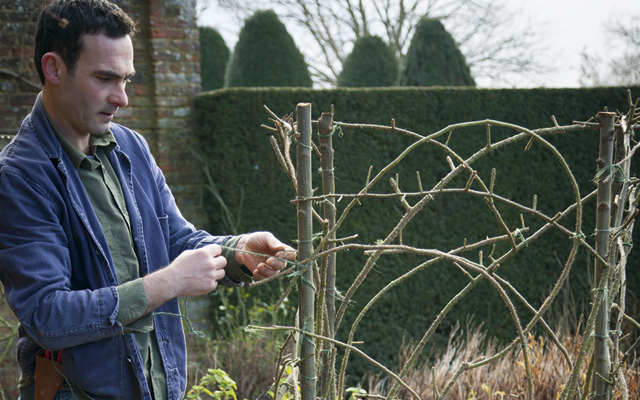How to get ahead in the garden this winter
Getting a few winter jobs done in the garden prior to Christmas will set you in good stead.


Now that the dormant season is here, it’s tempting to take things a little easier outdoors; for many people, this gardening year has already ended. The weather can be uninviting and the days short, but getting a few winter jobs out of the way prior to Christmas means one is ahead and not faced with a backlog of urgent work if (or when) bad weather arrives in January and February.
Take hardwood cuttings Many shrubs can be propagated by hardwood cuttings and now is the perfect time to do it. Select shoots that are approximately pencil-thick and 12in long and cut just beneath a node or leaf axil at the bottom and just above a bud at the top. Depending on the quantity you’ve taken, they should be lined out in nursery beds or around the edge of a clay pot, leaving only a few inches above soil level. Ensure they don’t dry out at any stage; they’ll be ready to plant out to their final positions the following autumn.
Lift and move shrubs By now, plants are in their dormancy, so this is the ideal time to move established shrubs (both deciduous and evergreen) to new places, if required. Dig out the shrub with as much of the root ball as possible, replant into its prepared new site without delay and water in. Protect it from damaging winds and stake it if necessary. Presently, at Sissinghurst, I’m moving three Euonymus alatus from the Nuttery to the area known as Delos, plus yew and box plants (both about 20 years old) from the nursery into the garden.
Prune apple trees Another job I enjoy doing during December is pruning and training apples. Winter pruning is useful for maintaining a healthy, balanced framework and for ensuring good fruiting the following year. Use sharp secateurs to shorten all side-shoots coming off the laterals to 1½in to 2in (spur pruning). Every three years, remove some of these old spurs with a folding pruning saw to allow room for the fruit to develop and ripen properly. In the orchard, we choose not to prune our fruit trees in order to allow a more relaxed appearance; some trees then become convenient pegs for rambling roses to scramble into.
Plant fruit trees If time is on your side, fruit trees are best planted small, as a single stem called a whip. Go to a specialist nursery and get advice about varieties, rootstock and pollination; many specialists are listed in the RHS Plant Finder (www.rhs.org.uk/plants). Plant your young fruit whips in their permanent position as soon as you can after delivery or collection. If you’re unable to do this, you can keep them in a cold but frost-free garage for a short period; you can’t plant when the soil is frozen or waterlogged.
Prune roses Popular belief has it that shrub-rose pruning should be carried out in March, but, at Sissinghurst, we carry out ours between late October and January. First, we remove dead, diseased, weak and crossing growth, before shortening all of the remaining shoots by about a third. We also remove completely a proportion of the older wood to encourage strong growth shoots from the base and tie in stems to a framework. Following pruning, it’s important to feed the rose; we use a dressing of two parts Kieserite (a magnesium-rich fertiliser) to one part Potash sprinkled around the root zone. We follow up with a mulch, applying a good dollop of our own compost to a depth of about 4in.
Fill the house with indoor plants One remedy for floral famine outside is to fill the indoors with colour and I particularly like the exotic ambience of orchids. Without a doubt, the easiest to grow are Cymbidiums, which are very widely available. They thrive on neglect and bloom for ages, providing a morale-boosting blast at this horticulturally rather lean time.
Exquisite houses, the beauty of Nature, and how to get the most from your life, straight to your inbox.
Country Life is unlike any other magazine: the only glossy weekly on the newsstand and the only magazine that has been guest-edited by His Majesty The King not once, but twice. It is a celebration of modern rural life and all its diverse joys and pleasures — that was first published in Queen Victoria's Diamond Jubilee year. Our eclectic mixture of witty and informative content — from the most up-to-date property news and commentary and a coveted glimpse inside some of the UK's best houses and gardens, to gardening, the arts and interior design, written by experts in their field — still cannot be found in print or online, anywhere else.
